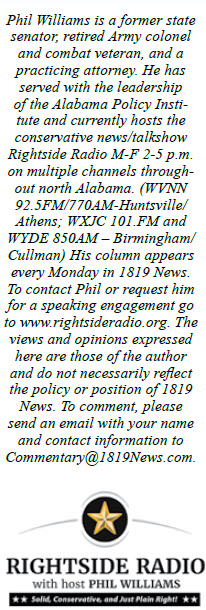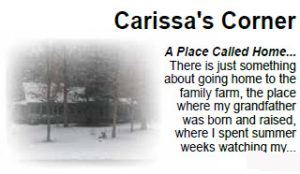 By: Phil Williams
By: Phil Williams
Years ago, in Saddam Hussein’s Iraq, a government building in Baghdad had an American flag painted on the floor so that people would have to walk on it as they entered. It was a sign of disrespect. In the Arab world the bottom of a shoe denotes a major insult. It implies that the other person is filthier than the dirt on a shoe sole. When Saddam had an American flag painted on a walking space, he knew exactly what he was doing, and he expected it to be walked over. A similar story emerged in more recent years at a university in Tehran. Officials had a large walking area painted with American and Israeli flags for the sole purpose of insulting the two nations. The plan actually backfired as students refused to walk over the flags in silent protest of the tyrannical regime.
But those are Arab nations where the U.S. is not welcomed. We expect such behavior from tyrants like Saddam and the Ayatollahs. The flags were painted in walking spaces to entrap their own people into joining in government-sanctioned insults. They expected people to walk on them as some evidence of the official position that the U.S. is an awful devilish enemy worth no more than the dirt on the bottom of Saddam’s shoes. The Ayatollahs were likely not pleased when students did not join their silly exercise in flag walking.
 Carry that line of thought home for a minute. Ask yourself: Why do they keep painting rainbow flags on the roads and crosswalks here in the U.S.? Aren’t they aware that people have to walk and drive there? Don’t they know the risk of the rainbow imagery being tarnished by traffic? Are they not aware that some folks are going to be put off by seeing their tax dollars used for a massive frivolous asphalt virtue signal? Most importantly, don’t they realize that some folks will intentionally leave tire marks and trash on their rainbow road?
Carry that line of thought home for a minute. Ask yourself: Why do they keep painting rainbow flags on the roads and crosswalks here in the U.S.? Aren’t they aware that people have to walk and drive there? Don’t they know the risk of the rainbow imagery being tarnished by traffic? Are they not aware that some folks are going to be put off by seeing their tax dollars used for a massive frivolous asphalt virtue signal? Most importantly, don’t they realize that some folks will intentionally leave tire marks and trash on their rainbow road?
The answer to each question is “Yes.”
Every so-called “progressive” city that paints a rainbow in the street knows exactly what is going to happen. They expect it. They want it. They need it.
Every errant tire mark, every spilled coffee, every shoe scuff, becomes a rallying cry, a “hate crime.” Marks on the rainbow road validate victimhood and placing such a mural in a high-traffic area is intentional. Doing so may also be actionable at law, though perhaps not in the manner the left intended. Civil law could determine that the rainbow road is an attractive nuisance. Criminal law could find it an entrapment. A story broke recently about three teenagers on electric scooters in Spokane, WA. These kids came upon a freshly painted rainbow crosswalk and being kids, they rode out into the brightly colored spectacle, turned some laps, and left (horror of horrors!) skid marks on the road surface. I submit that but for the rainbow road, they would have just scooted right by. But it was attractive. They were kids. It was a lark. The town called them criminals. Under the law, an attractive nuisance is a dangerous condition on a landowner’s property that “may attract children onto the land and pose a risk to their safety.” It actually imposes a duty on property owners for having placed such an “attraction” where children could access it. The classic example is a pool that is unfenced and attracts a child who is injured after falling in. Landowners must
exercise reasonable care to avoid attracting minors to dangers that may be “especially alluring to children of tender years.”
Flip the script to Spokane’s rainbow road. Did the city violate a duty by luring kids to its attractive rainbow nuisance? Were the scooter marks foreseeable? Arguably, yes!
It gets worse in that these kids are now charged with actual crimes. But in light of the need for a victimhood statement, perhaps this was actual entrapment. A criminal act to justify why the rainbow road was necessary. Entrapment occurs when agents of the government “induce commission of the crime so that the Government may prosecute.” A criminal act which that person would not have otherwise committed but for the entrapment.
Rainbow murals painted on crosswalks? There to attract people? Even entrap people? Lauded thereafter as the reason why the rainbow murals were needed in the first place.
“We need a rainbow mural!…. on the street!….so everyone can see it!…..we need awareness of our victimhood!….but don’t really walk or drive on it!…..that’s mean!…..See! See! He walked on it!….I told you we were victims!….it’s so hard, we need more protections from hate crimes now!”
Then, like replacing the bait on a hook, the attractive nuisance gets a fresh coat of paint, and the rainbow police wait and watch for the next hapless traveler who is enticed and entrapped to leave a tread mark on the surface of an actual roadway.
Interestingly, civil claims of attractive nuisance or criminal entrapment would work against the rainbow cities themselves. One gives rise to a civil claim for damages, the other is a complete defense to prosecution.
Either way, the rainbow people win because feckless city leaders will face the wrath of the courts, but the rainbow people still get their hate crime. They attracted people with a nuisance, entrapped them in an alleged crime, and then crowed about it as justification for more rainbow murals.
They’re no better than tyrants like Saddam and the Ayatollahs trying to get people to walk on flags.
Here’s an idea, put up a rainbow billboard if you need to be seen and quit painting the roads and sidewalks of America. That’s what tyrants do.
By: Phil Williams





